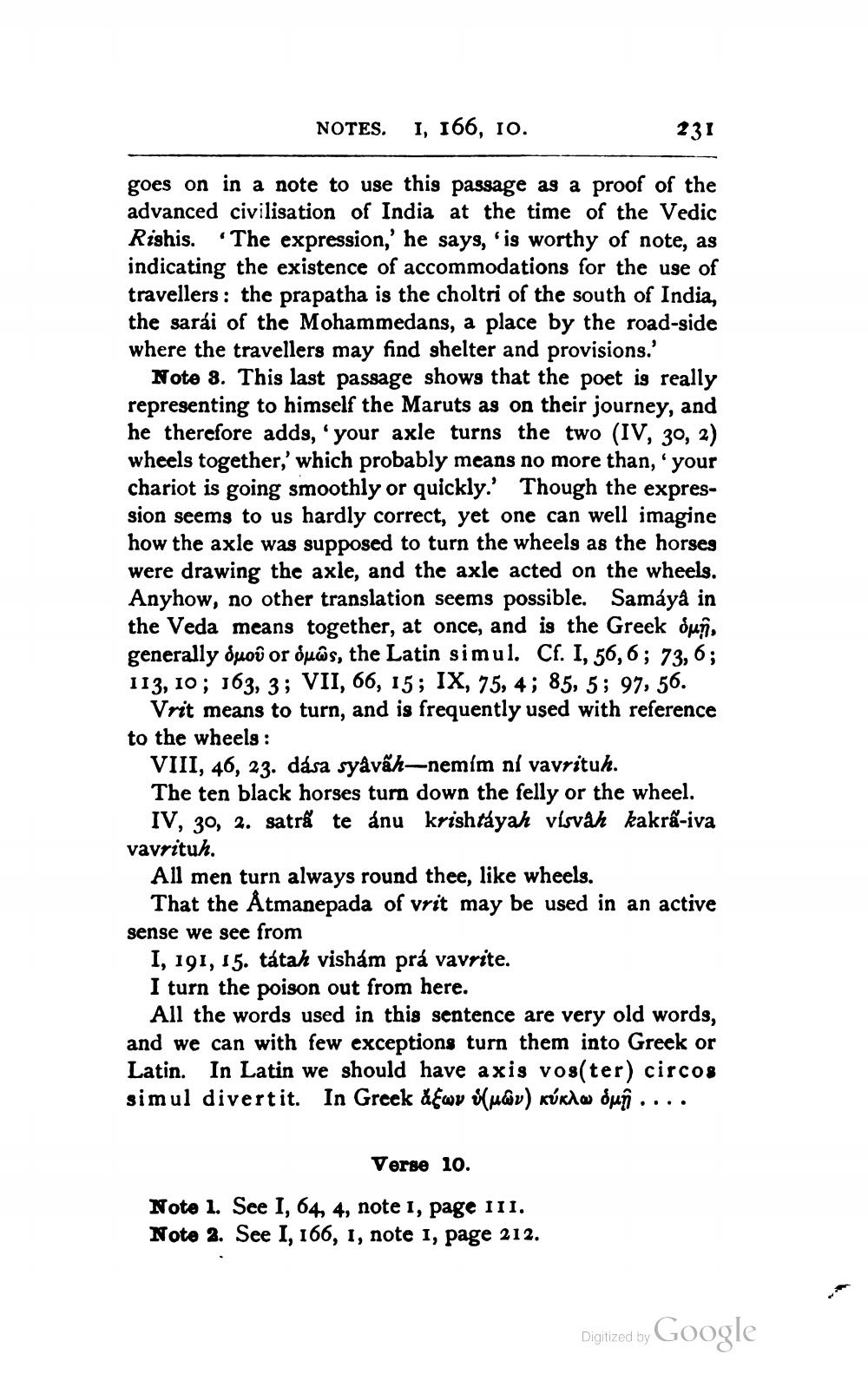________________
NOTES.
I, 166, 10.
231
goes on in a note to use this passage as a proof of the advanced civilisation of India at the time of the Vedic Rishis. The expression,' he says, 'is worthy of note, as indicating the existence of accommodations for the use of travellers : the prapatha is the choltri of the south of India, the sarai of the Mohammedans, a place by the road-side where the travellers may find shelter and provisions.'
Note 8. This last passage shows that the poet is really representing to himself the Maruts as on their journey, and he therefore adds, your axle turns the two (IV, 30, 2) wheels together,' which probably means no more than, your chariot is going smoothly or quickly. Though the expression seems to us hardly correct, yet one can well imagine how the axle was supposed to turn the wheels as the horses were drawing the axle, and the axle acted on the wheels. Anyhow, no other translation seems possible. Samáyà in the Veda means together, at once, and is the Greek dun. generally duoü or duws, the Latin simul. Cf. I, 56, 6; 73,6; 113, 10; 163, 3; VII, 66, 15; IX, 75, 4; 85, 5; 97, 56.
Vrit means to turn, and is frequently used with reference to the wheels :
VIII, 46, 23. dása syaváh-nemím ni vavrituh. The ten black horses turn down the felly or the wheel.
IV, 30, 2. satră te anu krishtayah visvah kakrã-iva vavrituh.
All men turn always round thee, like wheels.
That the Åtmanepada of vrit may be used in an active sense we see from
I, 191, 15. tátah vishám prá vavrite. I turn the poison out from here.
All the words used in this sentence are very old words, and we can with few exceptions turn them into Greek or Latin. In Latin we should have axis vos(ter) circos simul divertit. In Greek #Ewv d(uav) Kúkdw dus....
Verse 10.
Note 1. See I, 64, 4, note 1, page 111. Note 2. See I, 166, 1, note 1, page 212.
Digitized by
Digitized by Google




